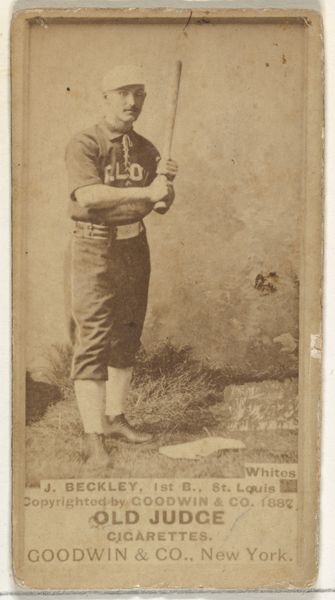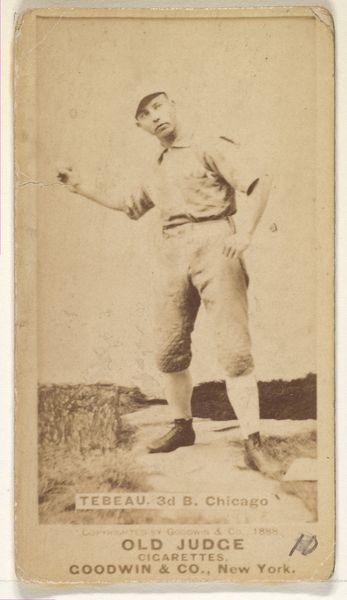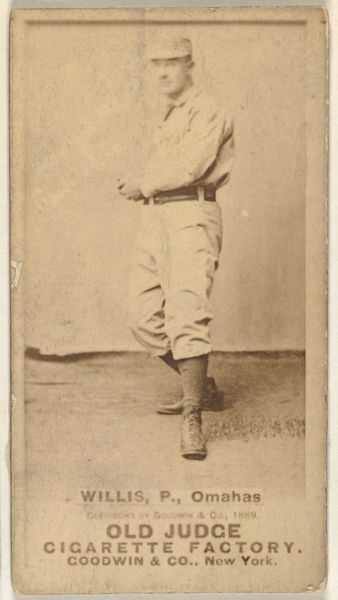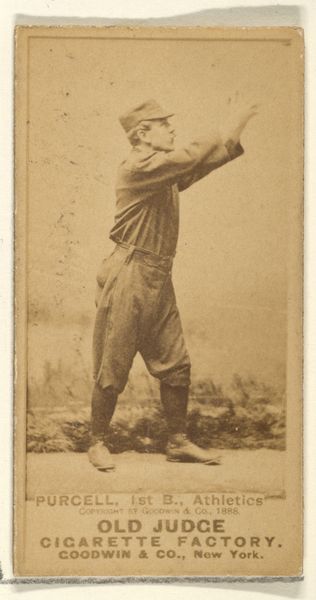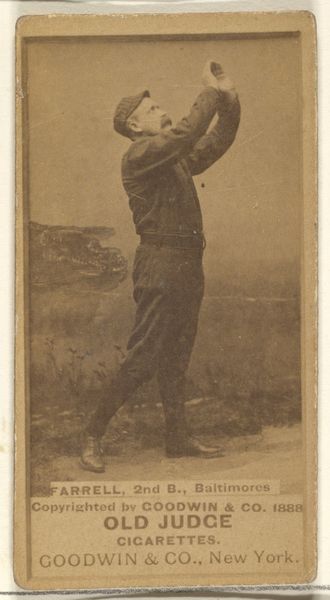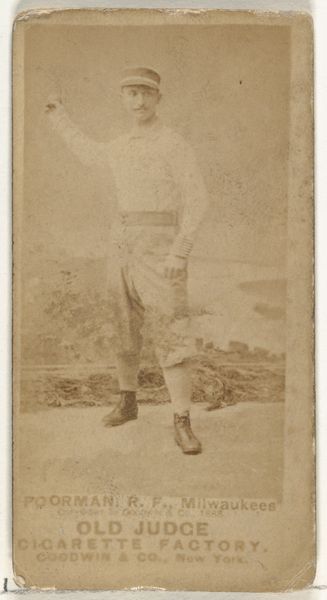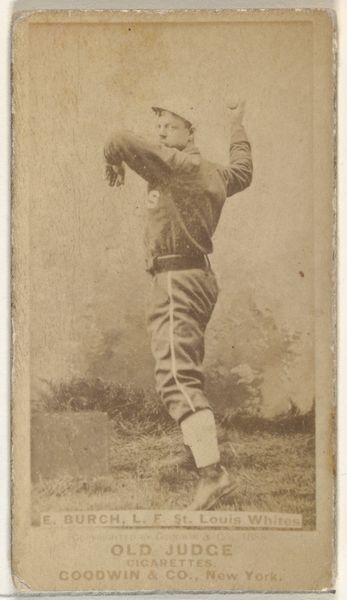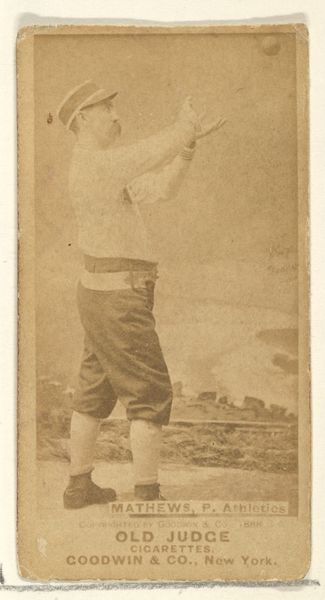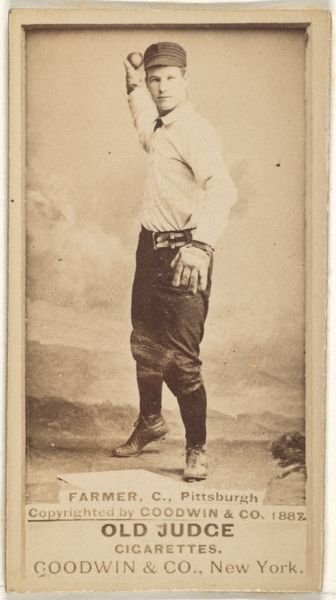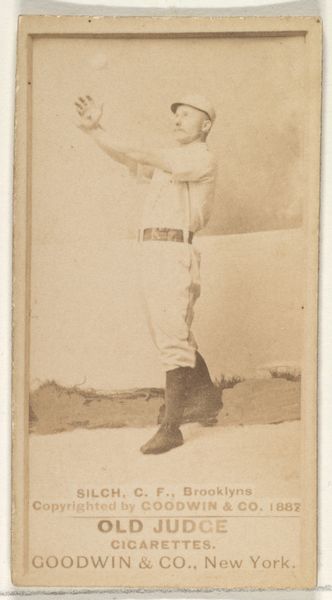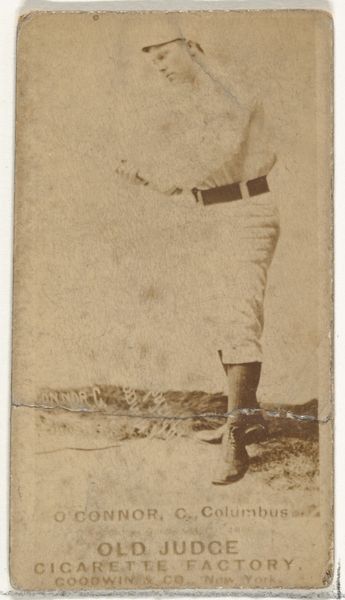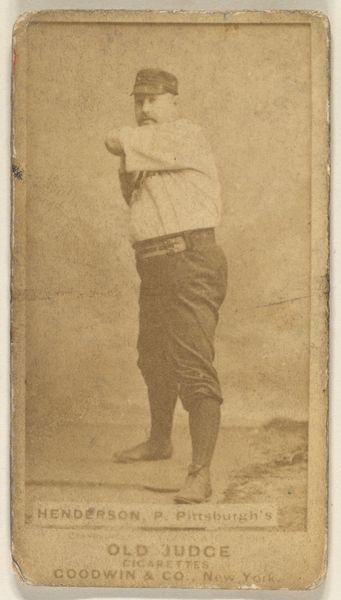
Thomas J. "Tom" Dolan, Catcher, St. Louis Browns, from the Old Judge series (N172) for Old Judge Cigarettes 1888
0:00
0:00
drawing, print, daguerreotype, photography
#
portrait
#
drawing
# print
#
daguerreotype
#
baseball
#
photography
#
men
Dimensions: sheet: 2 11/16 x 1 3/8 in. (6.9 x 3.5 cm)
Copyright: Public Domain
Curator: Here we have a portrait of Thomas "Tom" Dolan, a catcher for the St. Louis Browns. The piece dates to 1888 and is from the Old Judge series, a set of baseball cards produced by Goodwin & Company to promote their Old Judge Cigarettes. It's fascinating—a daguerreotype photograph reproduced as a print. Editor: My first thought? There’s a melancholy air around him. Even standing with a bat, ready to play, he feels...distant, a bit faded, like a ghost of summer. And is he standing on a cliff? Curator: The "cliff" might represent the ephemeral nature of fame, instantly recognizable then and yet destined to be forgotten, were it not for such tokens. Early baseball cards weren't just collectibles, but signifiers of social standing and aspiration, packaged with tobacco products and, ironically, documenting these athletes' robust physicality. Dolan and the Browns become a symbol of idealized American masculinity. Editor: That pose, the bat casually held… it’s almost a gesture of defiance, maybe against time itself. As an athlete he certainly defied limitations to compete professionally; now, through this image, we ponder that ephemeral glory. Does the photo's sepia tone emphasize its passage, suggesting what vanishes even as it's captured? Curator: Sepia is almost inevitable given the materials. More interesting to me, as iconography, is his catcher's mitt. Look how deliberately hidden, downplayed; even his stance shows only polite preparedness to fulfill the Catcher’s function, yet nothing suggesting the ruggedness required for that essential backstop position. It’s as though we’re being shown a gentrified, mediated version of working-class heroism. Editor: A curated ruggedness, perfect! Like turning the grit of the game into… sepia-toned nostalgia. The framing contributes, too: It compresses him into a rectangle on that tiny card, and reduces him to a commercial object. We both overstate our nostalgia AND forget his pain as an individual who once ran to first base, all compressed into something sold along with poison sticks. Curator: An apt summary, well put. Editor: Yes. A cigarette advertisement becomes a poignant ghost story.
Comments
No comments
Be the first to comment and join the conversation on the ultimate creative platform.
